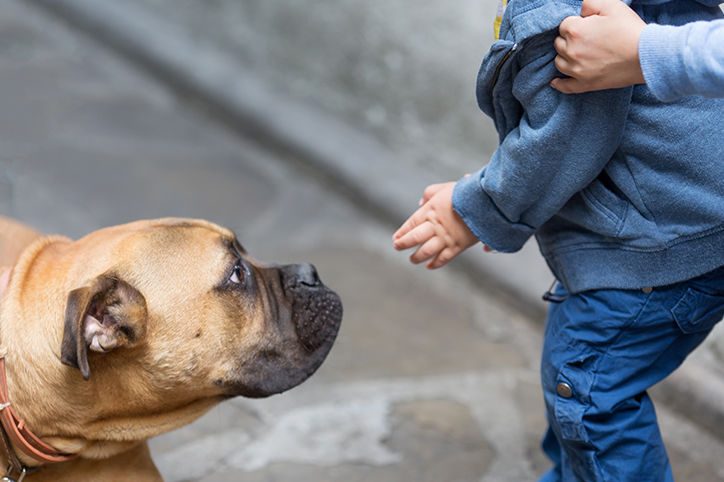You always dreamed of getting a family dog…but your plan has a hiccup because your child is terrified of them. Being scared of dogs (technically called cynophobia) is a very common fear among children and one they can overcome. And while it’s not uncommon for kids to be afraid of dogs, parents tend to minimize it because they think, “Oh, they’re just being a kid, they’ll grow out of it”. Except the earlier you intervene, the better the prognosis is.
I suffered from cynophobia because of an incident that occurred when I was seven years old. It was a perfect Sunday for the entire family until I decided to trespass through my neighbor’s yard to get the ball that I was playing with. Everything was going as planned when suddenly their medium-sized Rough Collie bit my leg. Since then I become anxious whenever a dog is nearby. And unfortunately, I think I passed my fear of dogs on to to my son. The challenge now is how to help him overcome this extreme fear.
Here’s how to make your children more comfortable around dogs:
Acknowledge their fear
It can be tempting to dismiss their fear as irrational or unfounded or even “a phase”. But fear is not rational and rational conversation isn’t going to help your child through their agitation.” That means the first step to helping your child overcome fear of dogs is to recognize and accept that that terror is there and that you are there to help them.
Watch what you say
Maintain a positive attitude when you approach someone with a dog. Instead of asking, “Is it safe to pet your dog?” or “Does she bite or growl?” ask questions like “Can we meet your dog?” Explain that dogs like to sniff and lick people to get to know them, and let them watch you interact in a gentle and respectful way first. Words have great power to inform a child’s view of dogs as dangerous, or as new friends to meet, so choose your words carefully.
Don’t rush it
Don’t rush your child into a dog playdate. Instead, gradually introduce them to dogs with with picture books, toys and movies. Then from a distance, perhaps in a park or sitting outside a pet supply store. Or take a photo of a pooch and show it to your child before you set up a meeting with it. Talk about the dog so that your child feels like they are getting to know it. And explain what the dog may do – it may bark because that is how it talks or it may wag its tail because it is happy to see you. Gradually increase their exposure so that it’s not a shock. Take
Arrange a meeting
You may want to initiate a meeting with an adult dog, rather than a puppy who jumps and nips. You can also look for a group that does doggy meet and greets or library programs where therapy dogs go to. Try to lead by example. If you’re thinking about suggesting to your child that they pet a dog or give them a treat, do it yourself first then invite them to try as well.
Reward bravery
Praise your child when you can see that they’re feeling a little nervous or unsure but aren’t backing away: “Look how brave you are being right now even though you may be a little scared.” Consider starting a bravery reward chart. Each time your child does something brave with a dog, they earn a sticker or a stamp for their chart. When they fill up the chart they get a big prize. If you do this well, your child should start looking for opportunities to be rewarded. You know it’s working when they ask “Can I get another sticker for my bravery chart if I pet that dog?”
Get help
If traditional methods aren’t doing the trick or if after a few weeks or months of de-sensitization, you child isn’t overcome their fear, you may want to look into cognitive behavioral therapy. But if your child seems stuck or it’s become a safety issue, contact a psychologist or psychiatrist. It is s a wonderful way to help children get rid of the negative associations they have with dogs, and replace them with positive ones. Hypnotherapy can also be an alternative method in helping your child get through their phobia.








